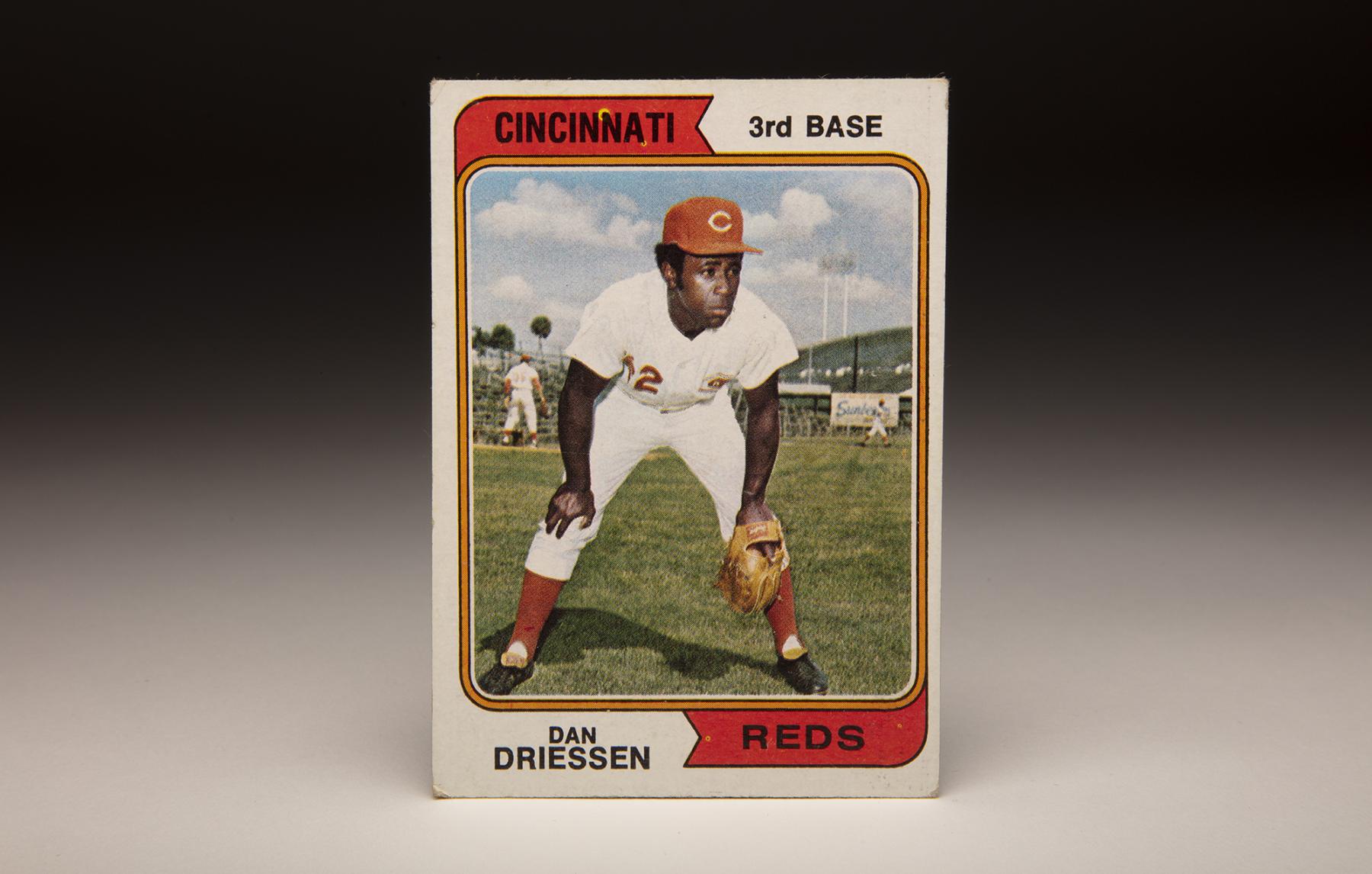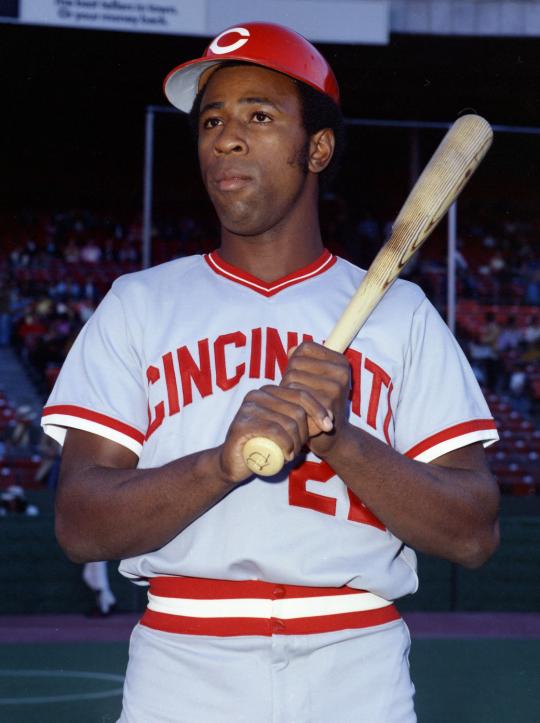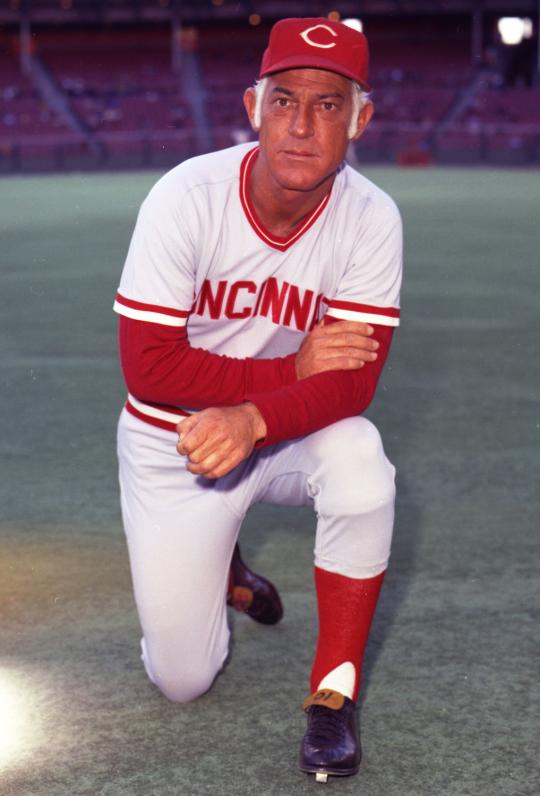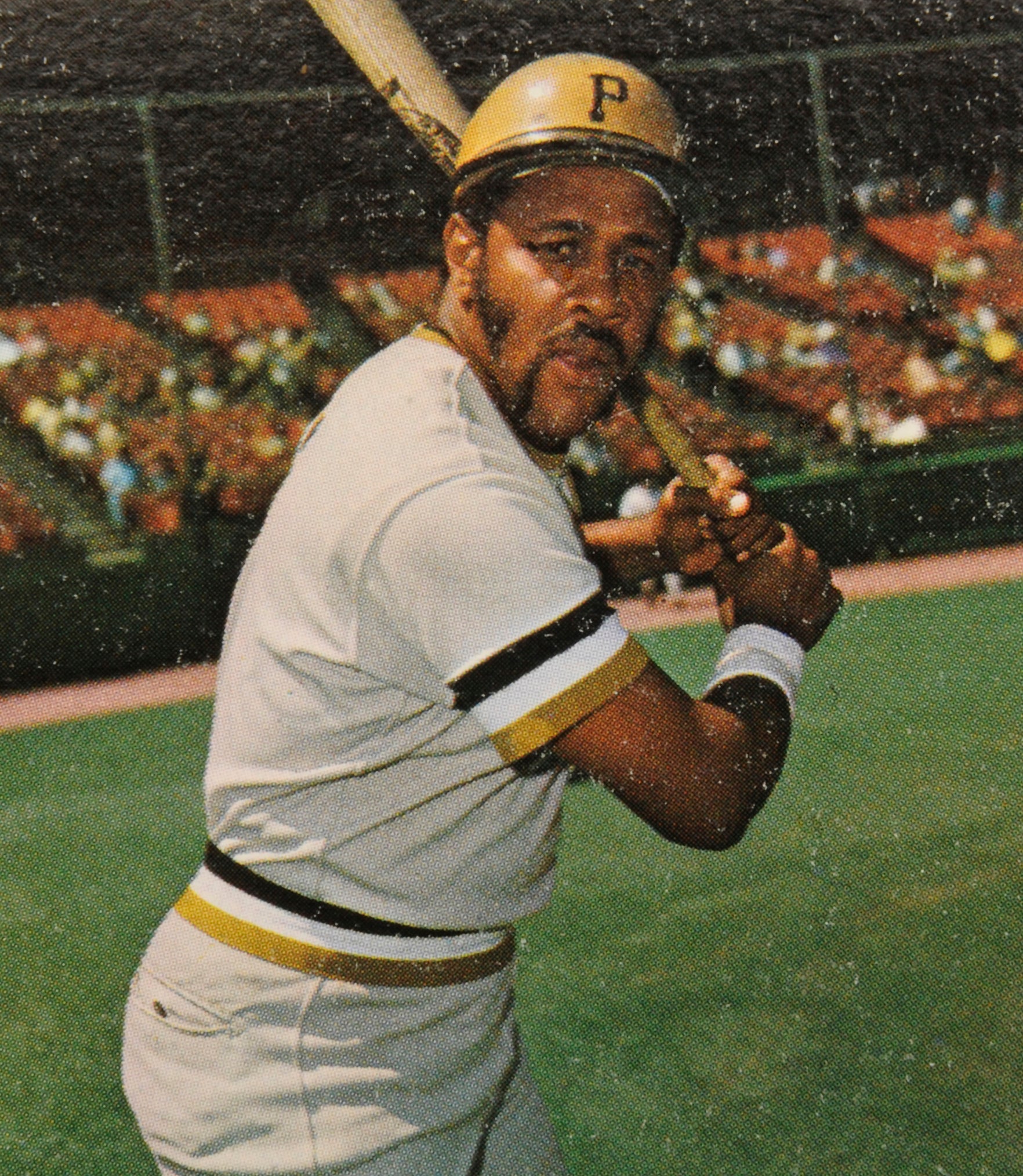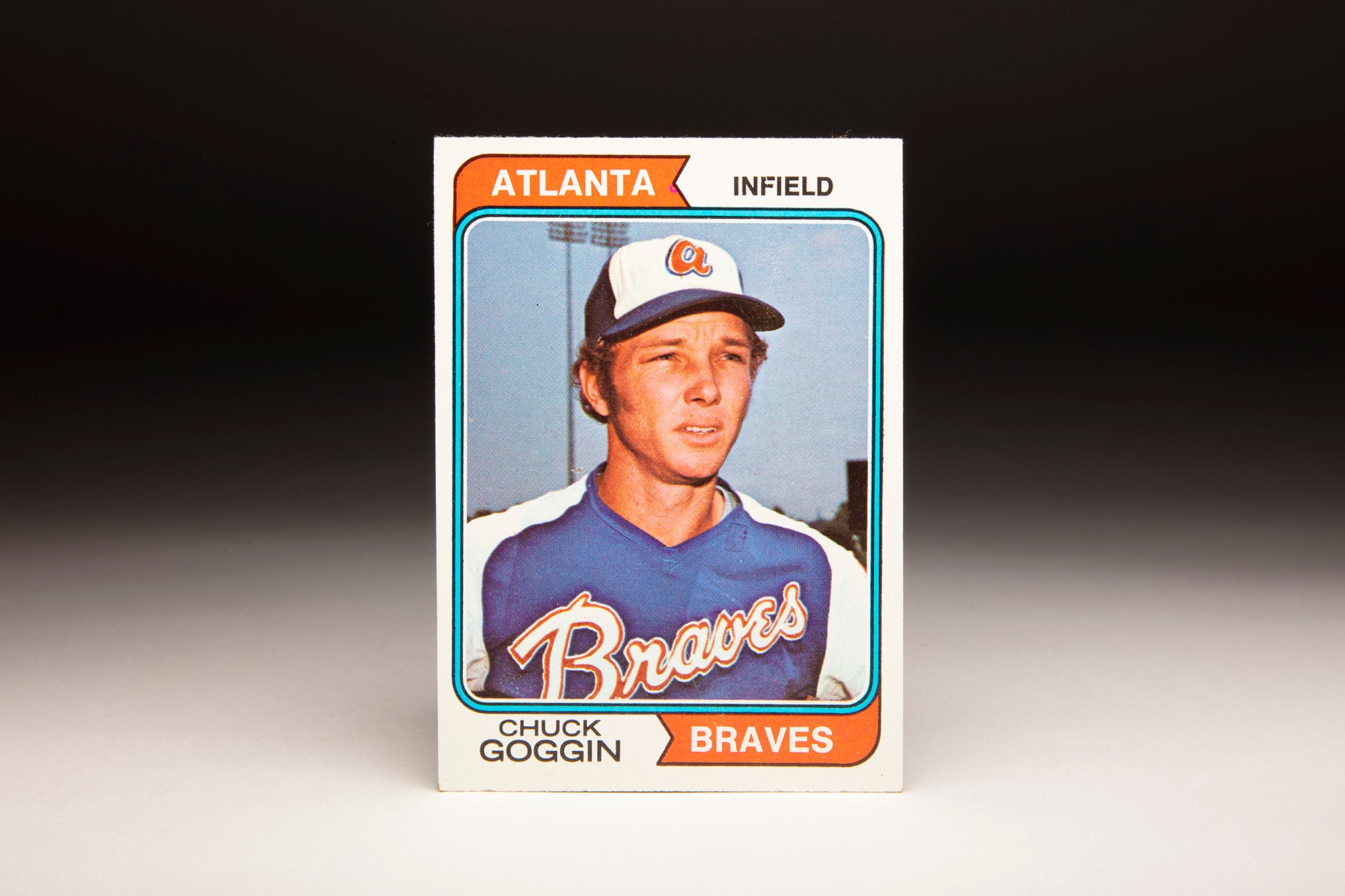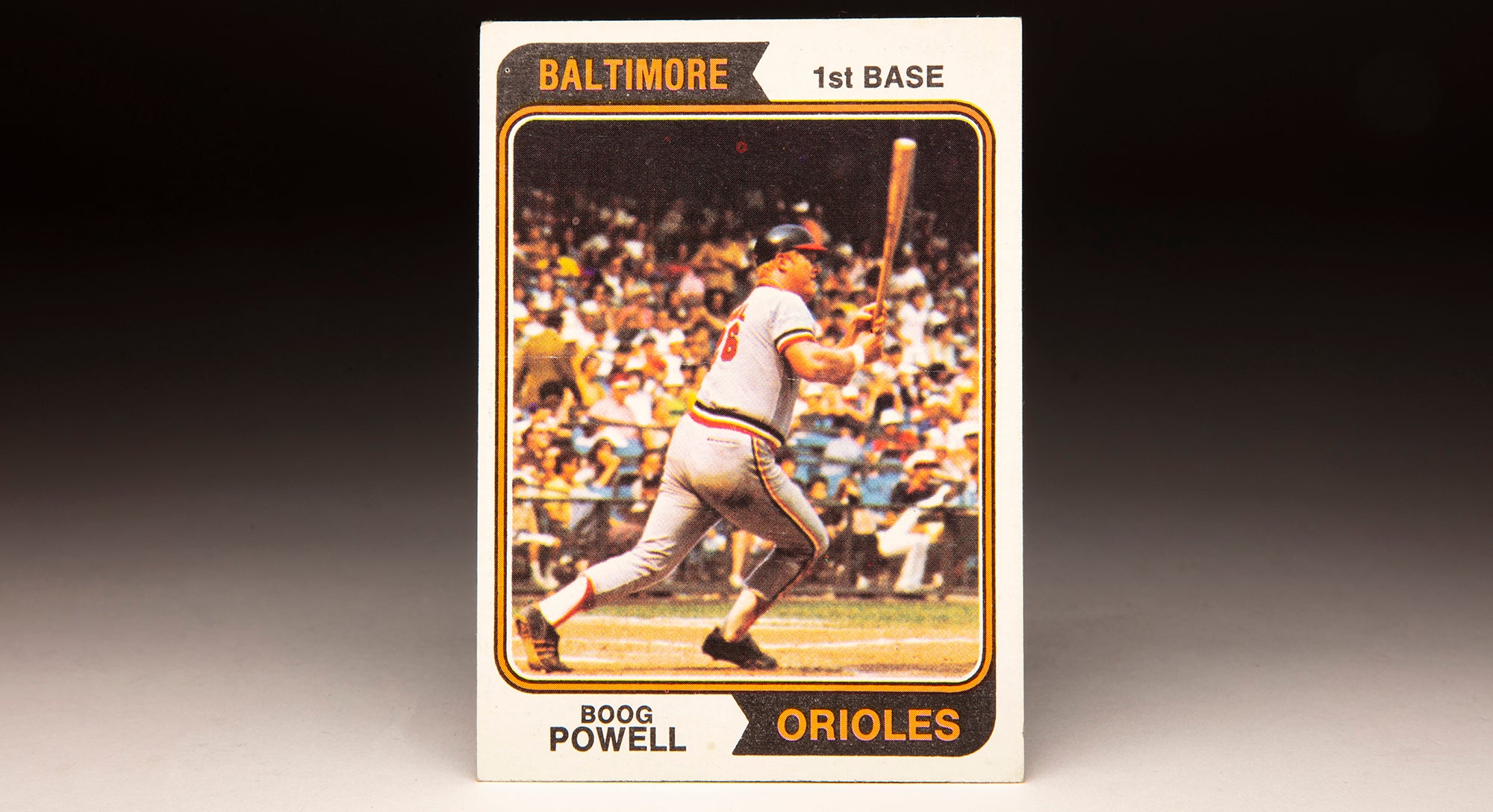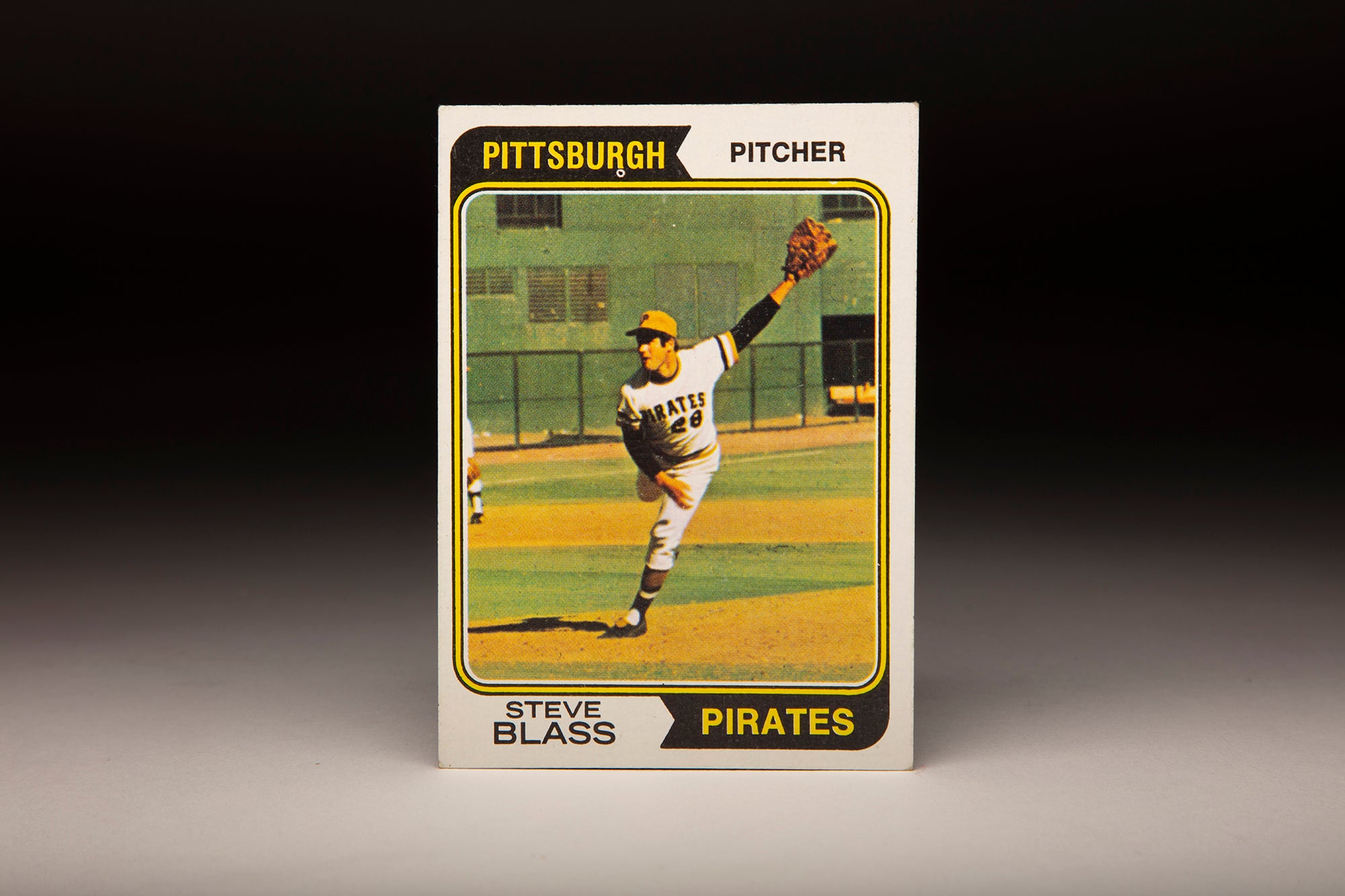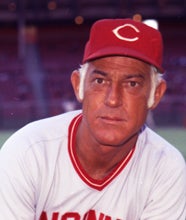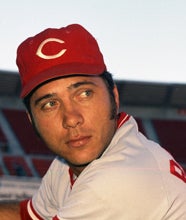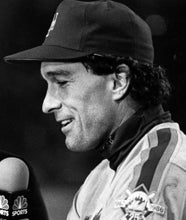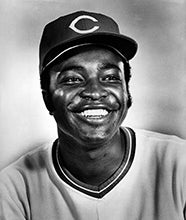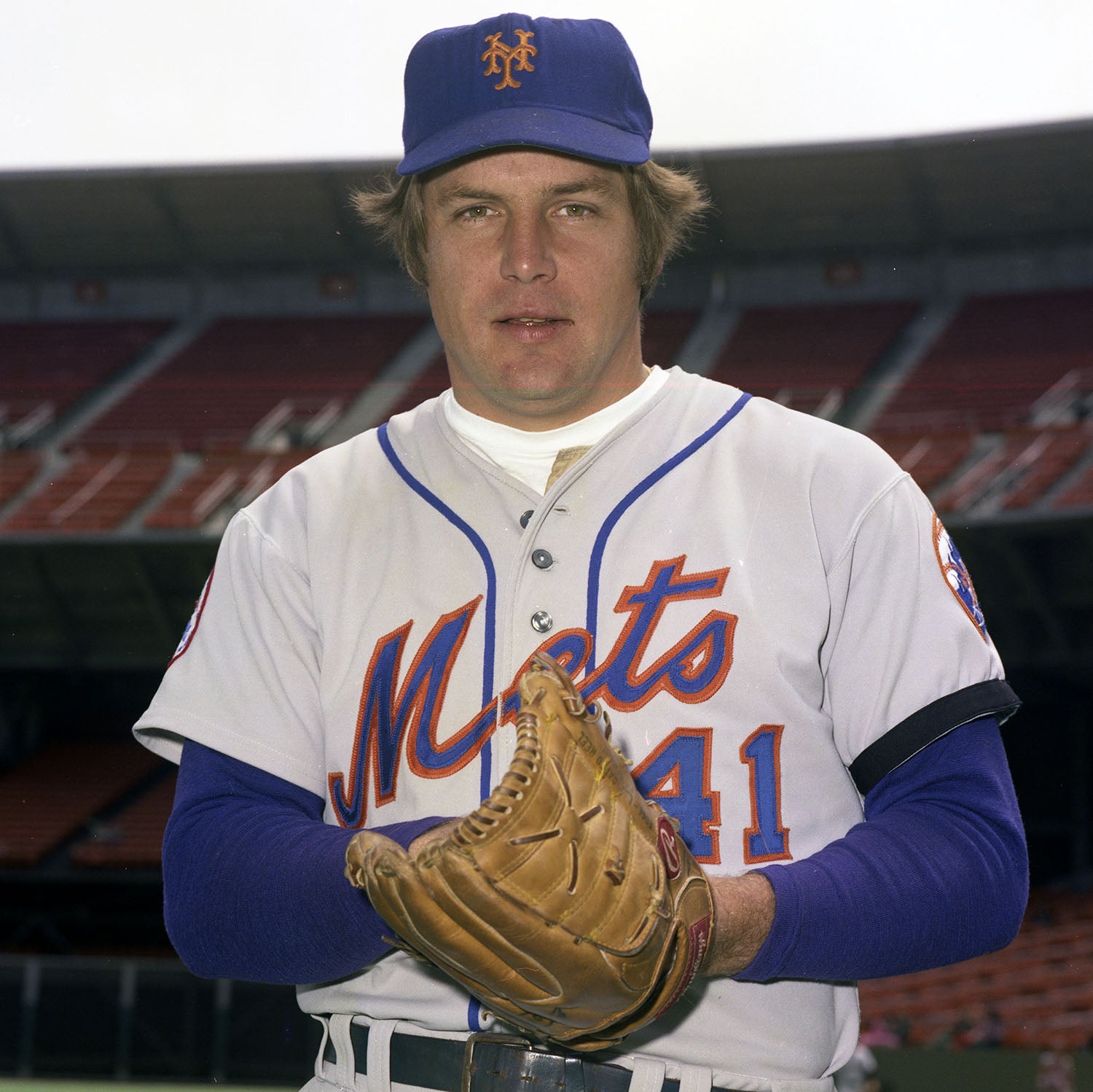- Home
- Our Stories
- #CardCorner: 1974 Topps Dan Driessen
#CardCorner: 1974 Topps Dan Driessen
Dan Driessen was the primary reserve on the Cincinnati Reds dynasty teams of the 1970s, and will forever be remembered as the first designated hitter – in a meaningful game – in National League history.
For a player who went undrafted out of high school, Driessen fashioned a career that no one would have predicted.
Born July 29, 1951, in Hilton Head, S.C., Driessen fell in love with baseball as a youngster and played sandlot ball on teams with his older brother, Bill. His high school had no team, and all the Driessen children helped support the family after their father died when Dan was six years old.
Eventually, Bill caught the attention of Hal Young, who was a coach at nearby Hardeeville High School and ran a semipro team: The Hardeeville Boll Weevils.
Bill, a shortstop/outfielder with tremendous power, convinced Young to give Dan a chance as a catcher. By the summer of 1969, Young was sure that both Driessens had a chance to make it in pro ball. Young sent a form letter to several big league teams, asking if they would take a look at Bill and Dan.
The Reds passed on the older brother – who was then 25 – but asked 17-year-old Dan to head to Savannah, Ga., where he would audition for Asheville Tourists manager Alex Cosmidis, whose team was in Savannah for a series.
“Don’t sign with anybody else,” the Dayton Daily News reported that Cosmidis told Driessen. “Wait till you hear from our scout.”
A few days later, Reds scout Bill Jamieson came to Hilton Head and signed Driessen. There was no bonus money involved, only an invitation to Spring Training in Tampa, Fla., in 1970.
“I got a letter with orders to fly to Tampa,” Driessen told the Dayton Daily News. “But I missed the flight. There was an airline strike and I couldn’t get a new reservation. So I rode an all-night bus. On the way down, we had a flat tire. I helped the driver change it. He gave me a $5 tip.”
The Reds quickly moved Driessen from behind the plate to first base, where he showed a natural smoothness around the bag. They sent him to Class A Tampa of the Florida State League, where Driessen hit just .223 with three extra base hits in 93 games. But he returned to Tampa in 1971 and hit .327, earmarking himself as a future big leaguer.
“The one thing you don’t want to do is give up too quickly on a prospect,” Reds general manager Bob Howsam told the Cincinnati Enquirer after Driessen had made the big leagues. “There had to be a reason he was recommended by one of your scouts in the first place.”
In 1972, the Reds promoted Driessen to Trois-Rivieres of the Eastern League, where he hit .322 with 37 doubles and 67 walks on a team loaded with future stars like Ken Griffey, Ray Knight and Joaquín Andújar.
“The kid was born to hit,” Reds manager Sparky Anderson told the Journal Herald of Dayton in Spring Training of 1972. “I’m not sure he isn’t better than half the guys we’ve got up here now.”
Russ Nixon, who managed Driessen in Tampa in 1971, went even further.
“(Driessen is) the finest looking young hitter I’ve ever seen,” Nixon told the Journal Herald. “I remember (Carl) Yastrzemski (Nixon’s teammate with the Red Sox) and I still say Driessen is a better hitter than Yaz was at the same age.”
Driessen began the 1973 season at Triple-A Indianapolis, where his smooth left-handed swing produced a .409 batting average in 47 games. The Reds brought him to Cincinnati in early June, and he made his big league debut – at third base – on June 9, batting sixth in the lineup.
“They pitch him everything out over the plate now and he hits it,” Reds hitting coach Ted Kluszewski told the Dayton Daily News soon after Driessen arrived in the big leagues in 1973. “In time, they’ll pitch him inside and he’ll start to pull the ball.”
Driessen hit well immediately, helping the defending National League champions shake off a 38-36 start. Driessen saw most of his time at third base, where he was uncomfortable but where the Reds had an opportunity for him. At first base, future Hall of Famer Tony Pérez was firmly entrenched as one of the game’s most respected clutch hitters.
Driessen finished the season batting .301 with 49 runs scored and 47 RBI in 102 games, helping Cincinnati win its third NL West title in four seasons. He started the first two games of the NLCS vs. the Mets at third base, hitting third in Game 1 in a powerful Reds lineup that featured future Hall of Famers Johnny Bench, Joe Morgan and Pérez.
“He has approached the ball and attacked it like a big leaguer,” Sparky Anderson told the Dayton Daily News. “He sits there and waits for the pitch – like a Pete Rose.”
In Game 5, Driessen was again playing third base and hitting third in the lineup. He singled in the first inning and hit a sacrifice fly in the third – both off Tom Seaver – and the latter cut the Mets’ lead to 2-1. But with the score tied at 2 in the bottom of the fifth, Wayne Garrett led off the inning with a double. Mets teammate Félix Millan then bunted the ball to pitcher Jack Billingham, who tossed the ball to Driessen at third for a tag play on Garrett. But Driessen stepped on the bag instead of tagging Garrett – and with no force play all runners were safe on a fielder’s choice.
The Mets capitalized by scoring four times in a game that ended in a 7-2 New York win as the Mets clinched the pennant.
“I thought there were runners on first and second,” Driessen told the Daily News, earning universal praise for standing tall in the clubhouse after the game while reliving his miscue. “I can’t explain why. I knew Garrett was the first batter and Millan was the second. When the umpire (Ed Vargo) called him safe, I looked around real quick to begin arguing…then I realized: ‘What have I done?’”
Driessen finished tied for third in the NL Rookie of the Year voting following the season.
Driessen was the Reds’ Opening Day third baseman in 1974 and he played in 150 games that year, hitting .281 with 63 runs scored, seven homers and 56 RBI. But he continued to struggle at third base, committing 24 errors and posting a .915 fielding percentage. Anderson regularly replaced him defensively late in games, and the Reds finished the season out of first place for the first time since 1969.
Anderson held an open competition at third base in Spring Training of 1975. John Vukovich won the Opening Day job but failed to hit once the season began, leading Anderson to shock fans and media by moving left fielder Pete Rose to third base in early May. Rose had a disastrous stint at third to start the 1966 season, but this time he settled in and stabilized the Reds’ lineup.
Anderson, meanwhile, announced that Driessen and George Foster would platoon in left field. But Foster took hold of the job with a .371 average in August, relegating Driessen to a bench role.
The Reds rolled to 108 wins and the NL West title in 1975, with Driessen hitting .281 in 88 games. But Driessen did not appear in the Reds’ sweep of the Pirates in the NLCS and made only two pinch-hitting appearances in Cincinnati’s seven-game win over Boston in the World Series.
The 1976 season was a virtual repeat of 1975 for both the Reds and Driessen. Cincinnati won 102 regular season games as Driessen hit .247 in 98 games off the bench. Driessen appeared in one NLCS game as a pinch-hitter as the Reds swept the Phillies, but garnered national attention when he became the first National Leaguer to appear as a designated hitter in Game 1 of the World Series.
Driessen hit .357 with four runs scored in Cincinnati’s sweep of the Yankees. In Game 3 alone, Driessen was 3-for-3 with a double, a home run, a walk and a stolen base.
“I know the situation here and I understand Sparky’s problems,” Driessen told the Hartford Courant, referring to the depth on the Reds’ roster. “I’m not going to rush things. I’m still young and my time will come.”
Driessen’s time came two months after the Reds’ second straight World Series triumph when Pérez was traded to the Expos. The first base job now belonged to Driessen.
“I know that if I do a good job,” Driessen told the Tampa Tribune in Spring Training in 1977, “Sparky won’t need to play anyone else at first base.”
Driessen had his best big league season in 1977, hitting .300 with 17 home runs, 91 RBI and 31 stolen bases – the most by an NL first baseman since Boston’s Hap Myers in 1913. At first base, Driessen’s .994 fielding percentage was the second-best in the NL.
The Reds’ dynasty, however, ended as Cincinnati finished in second place in the NL West – 10 games behind the Dodgers.
In 1978, Driessen slumped to .250 with 16 homers and 70 RBI – though he led the NL in fielding percentage with a mark of .996. The Reds again finished in second place – and Anderson was dismissed following the season. Driessen, however, received a vote of confidence when he signed a six-year contract with the Reds – the longest in team history to that point.
Under new manager John McNamara, the Reds reclaimed the NL West in 1979 – with Driessen hitting .250 with 18 homers and 75 RBI. But Driessen had just one hit in 12 at-bats in the NLCS as the Reds were swept by the Pirates.
Though he never evolved into the hitter many predicted during his first years in the game, Driessen had become a solid big leaguer whose production was uncannily consistent. In 1980, Driessen hit .265 with 14 homers and 74 RBI to go with an NL-best 93 walks. He slumped to .236 in 1981 in a season that was truncated by a strike, but the Reds went 66-42 to post the best record in baseball – incredibly missing the playoffs only because the season was divided into two halves, with the Reds finishing the first half one-half game behind the Dodgers and trailing second-half champion Houston by 1.5 games.
Forced to share time with Bench at first base in 1981, Driessen publicly campaigned to be traded. But the Reds held on to Driessen, who still had three seasons left on his contract following the 1981 campaign.
In 1982, however, the Red cratered – finishing in last place in the NL West with a 61-101 mark. Driessen rebounded with a typical Driessen season, hitting .269 with 17 homers, 57 RBI and 82 walks while leading all NL first basemen with a .998 fielding percentage, going 97 straight games without an error.
Driessen led the 1982 Reds in home runs and tied for the team lead in RBI with César Cedeño.
In 1983, Driessen missed three weeks with a knee injury and appeared in just 122 games, batting .277 with 12 homers and 57 RBI while leading NL first basemen in fielding percentage for the third-and-final time. Then with his contract set to expire after the season, Driessen was traded to the Expos on July 26, 1984, for pitcher Andy McGaffigan and a minor leaguer.
Driessen turned down a contract extension offer by the Reds during the spring of 1983.
“He has been unhappy for a long time,” Reds shortstop Dave Concepción told the Associated Press after the trade. “We all knew he was going to go when he didn’t sign in the spring.
“He’s a great man, a professional. I don’t think there was ever anybody who has been with the Cincinnati club who didn’t like Dries, and I don’t think there is anybody here who doesn’t hate to see him go.”
Joining an Expos club that featured future Hall of Famers Gary Carter, Andre Dawson and Tim Raines, Driessen hit nine home runs and drove in 32 runs over 51 games – and he quickly agreed to a new three-year deal that would keep him under contract through 1987. He finished the 1984 season with a .269 average, 16 home runs and 60 RBI.
Now 33, Driessen began the 1985 season as the Expos first baseman but saw his power numbers diminish. After recording just six homers and 25 RBI in 91 games, Driessen was traded to the Giants on Aug. 1, 1985 – and he finished the year with a .243 average, nine homers and 47 RBI in 145 games.
With prospect Will Clark ready to take over at first base, the Giants released Driessen on May 1, 1986. He signed a minor league deal with the Astros a month later and played in a handful of games that summer, appearing in a total of 32 games that year with San Francisco and Houston.
When the Astros cut Driessen in Spring Training of 1987, he was out of the game for about two months before the Cardinals signed him to a minor league deal in June. When first baseman Jack Clark injured an ankle in early September, Driessen took over at first base and helped the Cardinals claim the NL East title – hitting .241 with 10 RBI in 18 games to end the season.
Driessen had three hits apiece in the NLCS and the World Series, platooning with Jim Lindeman at first base, as St. Louis defeated San Francisco and then lost to Minnesota. The Cardinals released Driessen following the season, and after stints in the Mexican League and Senior Professional Baseball Association in 1989, Driessen retired from the playing field.
His big league legacy, however, continued for several years in the person of Gerald Perry. Driessen’s sister, Ida, was Perry’s mother – and Driessen’s nephew also grew up in Hilton Head and also played first base in the big leagues, fashioning a 13-year career with the Braves, Royals and Cardinals.
In 15 big league seasons, Driessen batted .267 with 1,464 hits, 153 home runs, 763 RBI and 154 stolen bases. His career fielding percentage of .995 at first base ranks in the top 30 all-time.
And though he was not a regular on the 1975-76 Reds teams than many rank among the best of all-time, Driessen left an indelible mark on Cincinnati baseball.
“There was a special chemistry about this team when we were winning,” Driessen told the Tampa Tribune. “We were one big happy family. You have to become close when you win like that.”
Craig Muder is the director of communications for the National Baseball Hall of Fame and Museum

